Maintaining a comfortable and healthy living environment requires controlling indoor humidity levels. Dehumidifiers are efficient remedies for reducing excess moisture, preventing the growth of molds, and enhancing air quality. However, homeowners face a challenge when choosing portable dehumidifiers or whole-house systems, as many options are available. This article studies the effectiveness of portable dehumidifiers by looking at their strengths, weaknesses, and purposes in different situations. It also exhaustively compares them with whole-house ones, enabling you to decide which suits you best.
How effective are portable dehumidifiers in reducing indoor humidity?
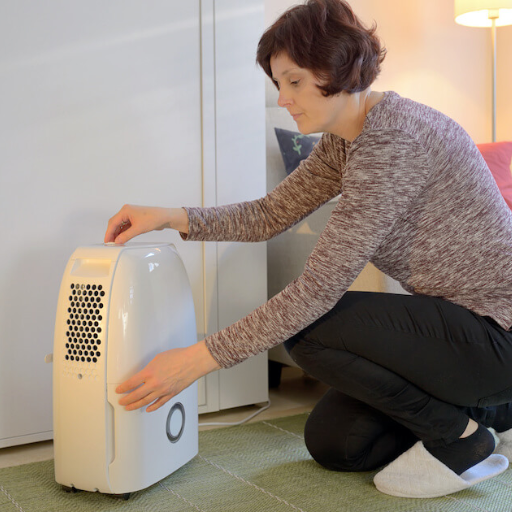
Portable dehumidifiers work well in lowering indoor humidity in specific parts or rooms only. They draw moist air into their units, cool it down to condense the water vapor, and then blow out drier air back into space again. The efficiency mainly depends on the size, environmental humidity level, and floor area treated with this unit. Despite their limited capacity compared to whole-house ones that cannot be fit for significant areas or multi-room applications, they can be a good choice if used locally, like basements, bedrooms, or bathrooms.
What humidity levels can a portable dehumidifier achieve?
To prevent mold growth and make people feel more comfortable, portable dehumidifiers can generally keep the humidity levels indoors between 30% and 50%. The appliance allows many models to set their desired humidity level and continue operating until it reaches the target. However, different humidity levels can be achieved based on dehumidifier capacity (measured in pints per day), initial space humidity, outside temperature, and area size. High-capacity models are more effective in maintaining lower moisture levels in bigger or incredibly moist rooms or areas. Consistent operation and proper positioning of these units are essential for the best performance.
How quickly do portable dehumidifiers remove excess moisture?
The rate at which portable dehumidifiers remove excess moisture depends mainly on their capacities in terms of pints per day, room sizes, initial relative humidity, and ambient temperatures. High-capacity ones can take away vast amounts of water within a few hours, thus reducing the moisture from medium-sized spaces. On average, most portable dehumidifiers show noticeable results within 24 to 48 hours of operation, assuming they are appropriately sized and placed for the environment.
Are portable dehumidifiers suitable for all room sizes?
The scale of the size of rooms in which portable dehumidifiers are applicable is generally broad. However, their efficiency mainly depends on determining the correct capacity for the specific space. Smaller ones can be used in small areas like bathrooms and closets, while larger ones can be used in basements and open-floor living spaces. Therefore, matching its rated capacity with the room’s is essential for it to work best. Using several units or even a whole-house dehumidifier may be more effective when overly large rooms or persistently damp conditions exist. The unit’s ability to effectively cover the space must always be ascertained; hence, reference should always be made to what the manufacturer states.
What are the advantages of using a portable dehumidifier?
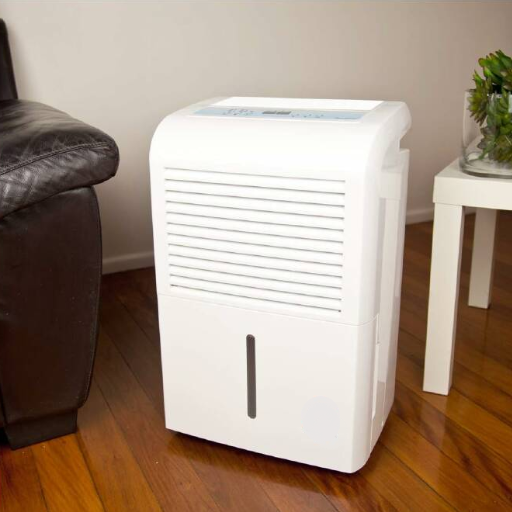
Portable dehumidifiers have many advantages, such as increased comfort and better indoor air quality. Removing excess moisture from the air helps avoid problems with mold growth, mildew, and dust mites, which all survive well in humid conditions. The existence of various sizes and capacities makes these portable dehumidifiers more suitable for particular rooms. Many modern models are energy efficient and have programmable functions like timers and humidity level settings, which make them simple to operate and work best.
How does a portable dehumidifier improve indoor air quality?
Excess humidity results in poor indoor air quality; hence, portable dehumidifiers reduce it. This is because mold, mildew, and dust mites thrive in high humidity, thus causing adverse health effects. Portable dehumidifiers usually maintain an optimal indoor relative humidity level between 30-50%, which helps prevent these harmful organisms. Most models also come installed with air filters that trap contaminants, including dust or pet dander, thus improving air quality even further. Hence, this is beneficial, especially for people with allergies or asthma, as it creates a cleaner and healthier environment.
What are the energy efficiency benefits of portable units?
The electricity used by portable dehumidifiers consumes less than what is consumed by whole-home systems, and as such, they are uniquely energy efficient. These models’ design focuses on specific areas in the home that require dehumidification to reduce wastage. A differentiating feature for many contemporary versions of portable humidifiers has been the inclusion of sophisticated energy conservation systems like programmable timers and adjustable settings, which guarantee their operation when needed. Additionally, a range of Energy Star-certified ones have been mechanically engineered to adhere to rigorous efficiency standards, lowering operating costs without compromising performance.
How easy is it to move and maintain a portable dehumidifier?
This makes it possible for portable dehumidifiers to be moved easily within a building while still ensuring that they are easy to maintain. Most units come with wheeled casters and ergonomic handles that make moving them from one room or space to another simple. Regarding maintenance, several brands are equipped with tanks that can be easily uninstalled and continuous drainage options for easy water disposal. Further, filters can be replaced or cleaned since these components are usually washable, thus making ease maintenance work more manageable. Keeping the tank and filter clean always ensures optimal system functionality, extending its lifespan; hence, this gadget is recommended for controlling indoor humidity in homes.
What are the limitations of portable dehumidifiers?
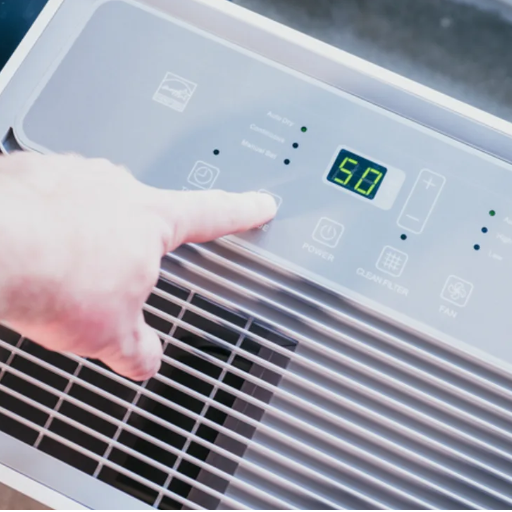
Although portable dehumidifiers offer flexible humidity control, there are some drawbacks. First, their volume is often limited, hence inefficient for large areas or humid spaces compared to industrial or whole-house units. There can also be an issue of the noise level, with many models having unmistakable operation sounds, which might affect quiet surroundings. Lastly, these devices need frequent water tank emptying unless a user selects the option of continuous drain; this may be inconvenient to some people. Finally, despite being reduced in most modern models, energy consumption may still lead to higher utility costs in the long run, primarily if used over extended periods.
Can a portable dehumidifier handle high humidity levels effectively?
However, their performance depends on the space’s size and the unit’s capacity. They are measured in pints daily, with larger units better suited for high-humidity environments or more significant areas. However, places with extremely high moisture levels might require continuous running by portable dehumidifiers, which may not achieve desirable humidity levels if used beyond their area coverage. Severe cases usually require industrial-grade or whole-house dehumidifiers for more consistent and efficient results.
How often do you need to empty the water tank in a portable unit?
The frequency of emptying the water tank in a portable dehumidifier depends on its size, unit capacity, and the degree of humidity in your space. Under moderately humid conditions, it must be emptied every one to two days. However, in very damp areas, especially when using it continuously, this may have to be done several times a day because many units offer a continuous drainage option to minimize manual emptying.
Are portable dehumidifiers noisy during operation?
The sound volume of portable dehumidifiers depends on the model, varying fan speeds, and the general design. Most devices have noise levels ranging between 40-60 decibels, almost as loud as a whisper or office noise. Fan speed can determine how quiet a unit is at low settings; additionally, one may be faced with noticeable sounds. Look for “quiet” marked units or those that use noise reduction technology to minimize disruption. Moreover, where it is positioned, and its proximity to occupied spaces can contribute to reduced perceived noise during operation.
How do portable dehumidifiers compare to whole-house dehumidifiers?
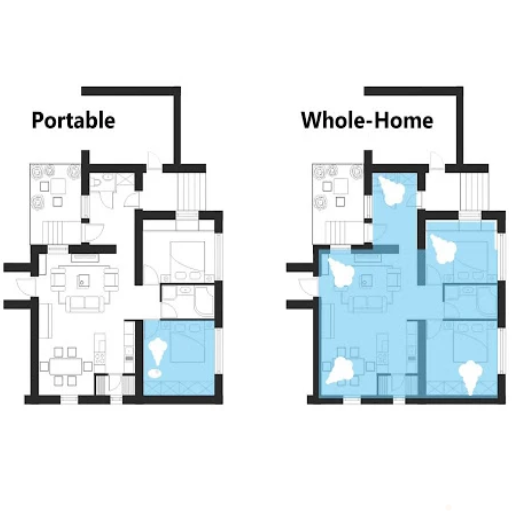
Portable dehumidifiers and whole-house dehumidifiers serve closely related functions but differ in scope, efficiency, and installation needs. They are limited to specific rooms or small spaces, thus offering room for maneuvering and simple use. Comparatively, these are cost-effective initially with very little setup work; hence, they are best suited for dealing with local humidity problems. However, they do not work well in covering large areas compared to their counterparts and require regular maintenance, such as emptying water tanks.
In contrast, whole-house dehumidifiers are built directly into homes’ HVAC systems and can dehumidify the entire living space. These units provide uniform humidity control in all areas with superior energy efficiency over time. Whole-house dehumidifiers may cost more initially and take longer to install. Still, everyday maintenance is minimal for them as opposed to larger houses’ regular long-term comprehensive humidity management. The choice between the two depends on the size of the area needing dehumidification and convenience or budget requirements.
What are the main differences between portable and whole-house dehumidifiers?
Portable and whole-house dehumidifiers vary mainly by range, effectiveness, and upkeep needs. Portable types are appropriate for one room or tiny spaces because they are cheap, easily installed, and allow for targeted humidity regulation. Nonetheless, these require frequent cleaning, such that water tanks have to be emptied while being less efficient over large areas. Regarding overall energy efficiency, whole-house systems with integrated dehumidifiers work better than others within a given period. While they demand high upfront costs and installation complexity, daily maintenance is lower, hence suitable for extended use in bigger spaces. This choice varies with the region’s size regarding accessibility and budget concerns.
Which type of dehumidifier is more cost-effective in the long run?
A whole-house dehumidifier is generally a better long-term investment for bigger rooms or an entire house; it’s being integrated into the HVAC system and contributes to energy efficiency, which saves on power consumption as opposed to using various portable units. This means they necessitate less frequent maintenance, thus reducing time and operational expenses. The initial cost of purchasing and installing them is indeed higher. Still, the savings are found through energy efficiency, and replacement costs, in the long run, supersede the upfront charges by far. Conversely, portable dehumidifiers may appear low priced initially; however, they can cause high energy usage and more tear and wear, mainly if used extensively in larger spaces. Accordingly, whole-house dehumidifiers remain economically better off when considered broadly over a long-term coverage period.
Can a portable dehumidifier replace the need for a whole-house system?
Although they can satisfy moisture problems in smaller, localized spaces, they can never be an alternative to whole-house systems for overall coverage. Throughout my survey, portable devices do well in single rooms or areas since they have limited capacity and efficiency compared to whole-house dehumidifiers. Whole-house systems, however, are meant for consistent humidity control throughout the entire home and are, therefore, necessary in bigger spaces or where there is pervasive moisture in a home. In this way, temporary portable units cannot override the effectiveness and gains of the system like whole-house dehumidifiers.
When should you choose a portable dehumidifier over a whole-house system?
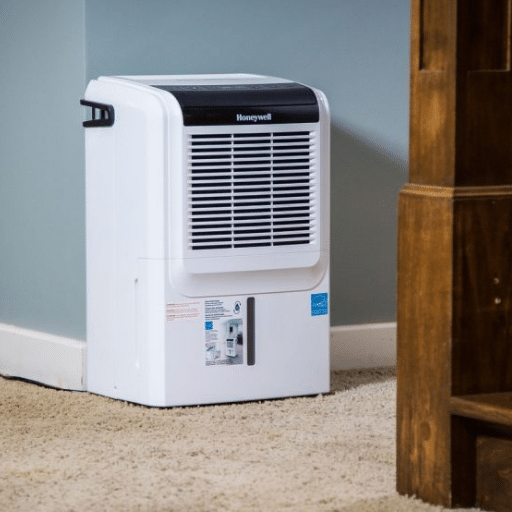
While fixing particular problem areas but not the whole house, you must choose a portable dehumidifier over a whole-house system. For instance, portable units would be most suitable for dealing with localized moisture in one room, basement, or storage area. They can also be used as practical measures in some cases, which are temporary, including during seasonal changes or as we await permanent solutions. Additionally, portable dehumidifiers cost less and are easy to install, apt for tiny homes, apartments, or budgetary restrictions.
What factors should you consider when deciding between portable and whole-house dehumidifiers?
In selecting whether to buy a portable or whole-house dehumidifier, I consider the dimension and magnitude of the space that needs dehumidification. A portable unit will be enough if only one specific room or spot exists. Still, in the case of large residential buildings where constant entire-home humidity maintenance is needed, it is more economical to use whole-house systems. Also important when choosing between them is how simplified their respective installations are; if you opt for mobile machines, there won’t be much setup, whereas installing entire-house equipment may require professional help. Finally, I look at energy efficiency and maintenance; even though they have higher installation costs initially, whole-house systems may bring about lifetime savings while, on the other hand, despite being cheaper when purchased outrightly afterward, they might require frequent servicing or replacement than counterparts.”
Are portable dehumidifiers better for small spaces or specific rooms?
Portable dehumidifiers are best suited for small spaces or specific rooms. Their small size and direct function make them perfect for removing local humidity without laborious installation. Besides, they can be moved around from one place to another cheaply and effectively, making them the most efficient way of managing moisture inside confined spaces.
How do portable dehumidifiers integrate with existing HVAC systems?
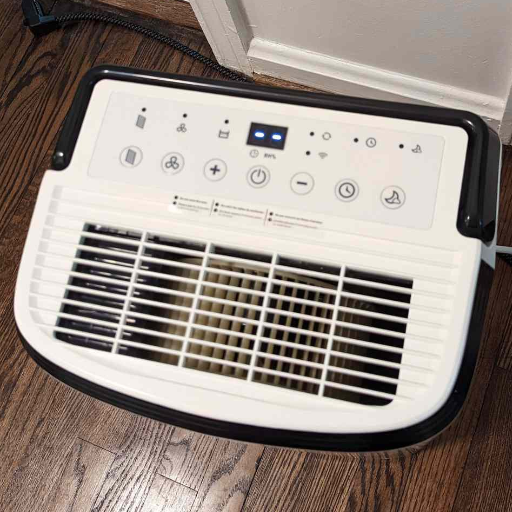
These portable dehumidifiers do not plug into existing HVAC systems as separate units. Nevertheless, they can be used alongside an HVAC system to fix localized humidity problems that the HVAC cannot handle completely. Placed strategically in high-moisture areas, a dehumidifier maintains indoor air quality by checking such complications as mold development, thereby increasing the overall efficiency of an HVAC system.
Can portable dehumidifiers work alongside air conditioners?
Portable dehumidifiers could be used together with air conditioners to improve indoor comfort and air quality. Even though the primary focus of an air conditioner is cooling the air, it also rids some humidity as a byproduct; on the other hand, it may fail to handle high amounts of moisture. A portable dehumidifier can go with an air conditioner to fight excessive humidity that might lead to problems such as mold growth, musty odors, and condensation. The two appliances balance the indoor environment by maintaining comfortable temperatures and optimal humidity. Proper positioning and sizing of the dehumidifier allows it to operate efficiently without overloading the air conditioner’s capacity.
Do you need to adjust your HVAC settings when using a portable dehumidifier?
Because portable dehumidifiers function independently, you don’t generally need to make significant changes to your HVAC settings when using one. However, for maximum energy efficiency and comfort, you may want to adjust your air conditioner slightly to take care of any extra dampness. This way, you can maintain indoor comfort without exposing your HVAC system to too much pressure.
References
Frequently Asked Questions (FAQ)
Q: Do portable dehumidifiers work?
A: Yes, portable dehumidifiers do work. They are effective at removing excess moisture from the air in smaller spaces. A portable dehumidifier may be suitable for individual rooms or small areas. Still, they have limitations compared to whole-house dehumidifiers when managing humidity levels throughout a home.
Q: What are the pros and cons of portable dehumidifiers?
A: Portable dehumidifiers have pros, including lower upfront costs, flexibility to move between rooms, and no installation required. However, they also have cons, including limited coverage area, the need for regular maintenance (emptying water tanks), potentially higher energy costs, and noise. Additionally, portable dehumidifiers may struggle to handle high humidity levels in larger spaces.
Q: How does a whole-house dehumidifier compare to a portable one?
A: A whole-house dehumidifier is integrated into your home’s HVAC system and can manage humidity levels. It’s more efficient for larger spaces and can handle higher moisture levels. Portable dehumidifiers, on the other hand, are standalone units designed for single rooms or small areas. While whole-home dehumidifiers are more expensive initially, they often provide better overall humidity control and energy efficiency in the long run.
Q: Do I need a whole-house dehumidifier, or is a portable one sufficient?
A: Your situation depends on whether you need a whole-house dehumidifier or a portable one. A whole-house dehumidifier might be the better choice if you have persistent humidity issues throughout your home or live in a very humid climate. However, a portable dehumidifier may be sufficient if you only need to manage humidity in a specific area, like a basement or a single room.
Q: How do whole-house dehumidifiers work with existing air conditioning systems?
A: Whole-house dehumidifiers are typically integrated with your existing air conditioning system. They work with your AC to remove moisture from the air as it circulates through your home. This integration allows for more efficient humidity control throughout the house without needing multiple portable units.
Q: What are the pros and cons of whole-house dehumidifiers?
A: Whole-house dehumidifiers offer consistent humidity control throughout the home, integration with existing HVAC systems, and improved energy efficiency. Their cons include higher initial costs, the need for professional installation, and potential complexity in maintenance and repairs.
Q: How do I choose the right dehumidifier for my home?
A: To choose the right dehumidifier, consider the size of the area you need to dehumidify, your climate, the severity of your humidity issues, and your budget. For whole-home solutions, consult an HVAC professional to determine if a whole-house dehumidifier is necessary. A portable dehumidifier may be sufficient for smaller spaces or temporary solutions. Always check the capacity (pints per day) and energy efficiency ratings when selecting a dehumidifier.
Q: Can a portable dehumidifier help with basement humidity?
A: A portable dehumidifier can effectively manage humidity in a basement. Basements often have higher moisture levels due to their location below ground. A portable basement dehumidifier can help remove excess moisture from the air, reducing the risk of mold growth and musty odors. However, a more robust solution, like a whole-house dehumidifier, might be necessary for larger basements or those with severe moisture issues.



